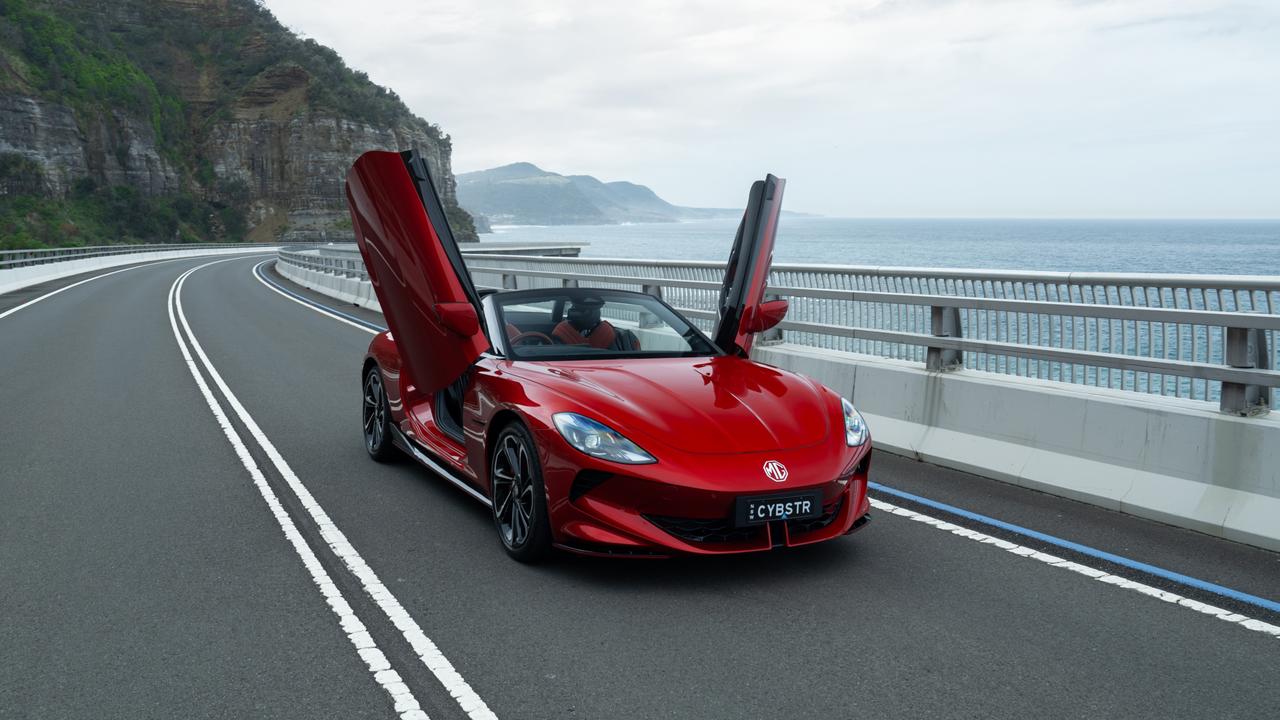Hyundai i30 sedan review: New four-door is packed with value
The car maker’s Australian arm had to fight hard to get this car to Australia, but was it worth it? We find out.

New Cars
Don't miss out on the headlines from New Cars. Followed categories will be added to My News.
Hyundai Australia says its ability to introduce the new i30 Sedan locally is a “minor miracle”.
Sold in the US and Korea as the Elantra, the crisply-styled four-door isn’t offered in the UK or Japan, so making a case for right-hand-drive production wasn’t easy.
It doesn’t help that small sedans are unfashionable compared to softroaders, but Hyundai is convinced it can seduce folks tempted to “skip the SUV”.
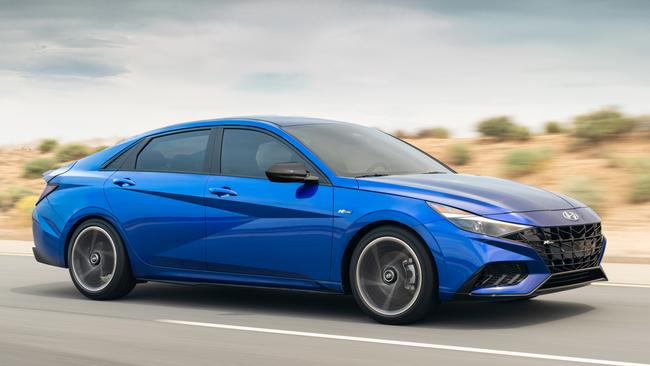
Pitched at buyers who appreciate design, the new i30 Sedan is visually arresting. Rival models such as the Honda Civic look much tamer than the sharply-creased Hyundai, which trades the pinched look of the outgoing Elantra for more sophisticated style.
Hyundai hopes a change in name will also make it more attractive to customers — and possibly overtake rivals in the sales charts.
But the i30 Sedan is fundamentally a different car than its hatchback cousin or the outgoing Elantra. Bigger in every measure than both models, it’s a spacious machine that feels a class above many small cars.
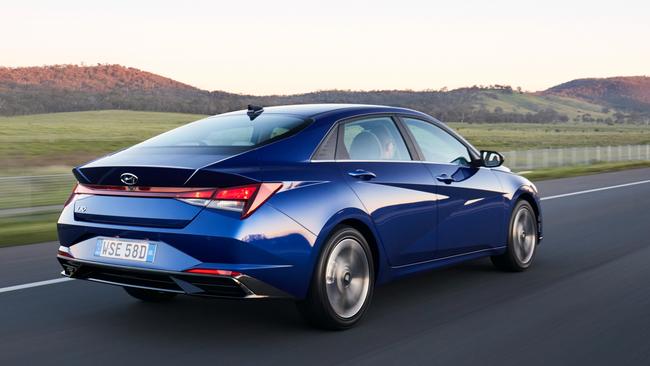
Priced from about $28,500 drive-away in basic Active manual form (a six-speed auto adds $2000), the sedan costs about $2900 more than the hatch, bringing 17-inch alloy wheels and leather trim as standard. A conventional dash with a small digital readout joins an 8-inch touchscreen with Apple CarPlay, Android Auto and wireless charging in the standard model.
Safety features include autonomous emergency braking with pedestrian detection, plus lane keeping assistance, active cruise control and rear cross-traffic alert. Buyers who want more can spend an extra $4000 for the auto-only i30 Elite sedan priced from about $34,500 drive-away. It offers twin 10.25-inch displays, 64-colour ambient lighting, smart keys, satnav, a premium stereo and more.

First impressions of the i30 Elite are strong — the clever screens, design flair and spacious cabin bring genuine wow-factor. A revised driving position places you low in the car, lending a sporty vibe sought after by those avoiding SUVs. There’s much more space in the rear than before, and air vents help keep back seat passengers comfortable — but they may be disappointed by a lack of power outlets.
On the road, Hyundai’s locally-sorted suspension feels taut and precise. Unlike the waterbed ride and approximate steering of Toyota’s Corolla sedan, the Hyundai feels crisp and accurate. A conventional auto is smoother around town than some rivals, but Hyundai’s 2.0-litre engine is weak-willed and thirsty compared to turbocharged equivalents, needing 7L/100km and plenty of revs to make 117kW and 191Nm.
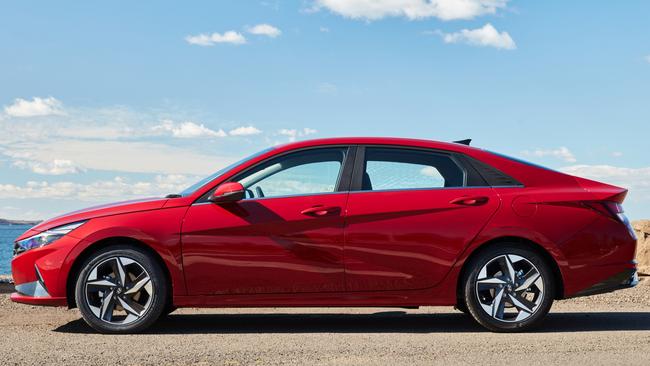
MORE POWER
Grunty N-Line variants due later in the year swap the standard 2.0-litre engine for a 1.6-litre four-cylinder turbo motor with 150kW and 265Nm, matched to a seven-speed dual-clutch auto.
It should be priced from about $36,000 drive-away.
A high-performance i30 N Sedan is on the way in 2021. Expect the same 206kW/392Nm engine and eight-speed dual-clutch auto as the updated i30 N hatch and fastback.
Hyundai Australia is weighing up whether to introduce a hybrid version. Sold in the US, it combines a 1.6-litre engine and 32kW electric motor to use less than 4.7L/100km of petrol.
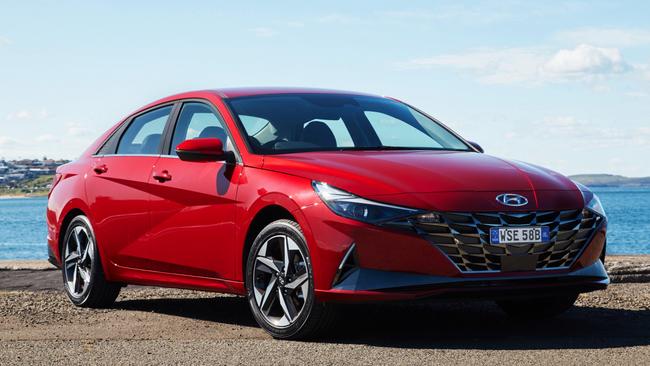
PLAYING IT SAFE
Don’t look for an official ANCAP safety rating for the i30 Sedan. Most ANCAP scores are derived from Euro crash test programs, but there is no European score for this car as it isn’t sold there.
Hyundai knows the lack of a centre airbag between the front seats makes a five-star score unlikely, so it won’t facilitate local assessment. Centre airbags, which prevent the driver and front passenger from colliding during a crash, are a new requirement for five-star ratings.
That could be a deal-breaker for fleet operators and ride-share drivers.
ANCAP has not ruled out acquiring examples of the i30 Sedan for local testing in 2021.
VERDICT 3.5/5
Value-packed, visually striking and decent to drive, the i30 Sedan offers an intriguing counterpoint to high-riding SUVs. An absent safety rating and ordinary standard engine hurt its appeal.
HYUNDAI i30 SEDAN VITALS
Price: From about $28,500 drive-away
Engine: 2.0-litre 4-cyl, 117kW/191Nm
Warranty/servicing: 5 years/unlimited km, $1404 for 5 years
Safety: Not rated, 6 airbags, auto emergency braking, active cruise control, lane-keep assist, rear cross-traffic alert
Thirst: 7L/100km
Cargo: 474L
Spare: Full size
Originally published as Hyundai i30 sedan review: New four-door is packed with value

